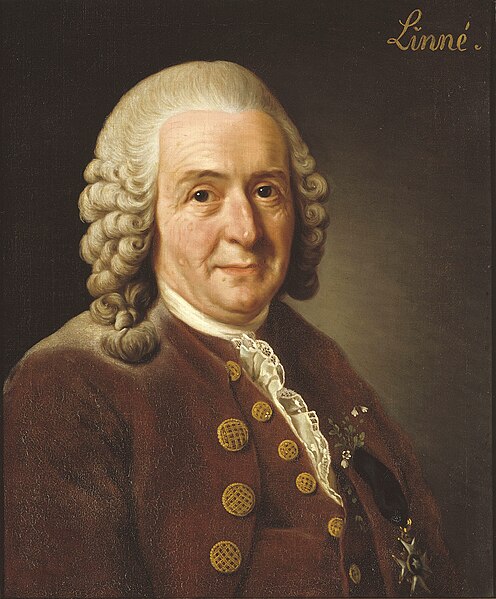 |
| Carl Linnaeus, the father of modern taxonomy |
As genetics can be used to reconstruct the tree of life, the tree itself can be used to chart chains of lineage within living organisms. Add in the fossil record and you have a powerful tool to look at the past and the evolution of life on Earth. Yet the further back in time you try to look, the fuzzier the image becomes as the amount and the reliability of the evidence decreases. The ultimate goal of all tree of life projects is to find the base of the tree and the first ever organisms on the planet.
One way around this problem is not to look at the physical features of the organism (in fact this is impossible when looking at fossilized bacteria and tricky in modern day species), but at the biochemistry of the organism, in particular proteins encoded by the creature's genome. Yet some proteins, with similar structures and biological functions, are placed under different families due to the way they are encoded in the DNA. This means that relatives and common ancestors cannot be identified as easily. Now, researchers led by Dr William Duax from the State University of New York, Buffalo, have found a method of analysis which gets around this problem.
Instead of focusing on many different families of proteins, they used ribosomal proteins which can be more accurately traced, giving a clearer picture of evolutionary trees. Ribosomal proteins in the same family have the same 3D structure. The researchers utilized this fact by analyzing the structure of the different proteins encoded by various organisms' DNA and then comparing small differences in the type and placement of the constituent amino acids.
 |
| Actinomadura madurae, just one of the many species of actinobacteria |
It is possible that LUCA (Last Universal Common Ancestor) and the first cell on the planet from which all life is descended was an actinobacterium. Or maybe it existed within a class of its own. Either way, this study represents the first attempt to try and narrow down the foundations of the tree of life from a simple single celled organism within the prokaryote kingdom to a more specific group. It will almost certainly be incredibly beneficial to future studies of the origins of life.